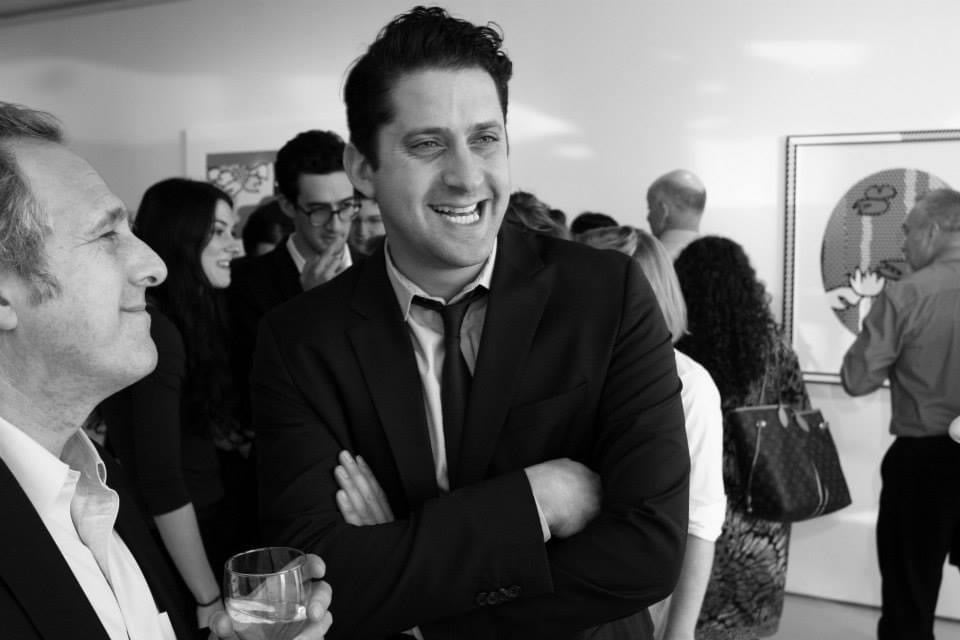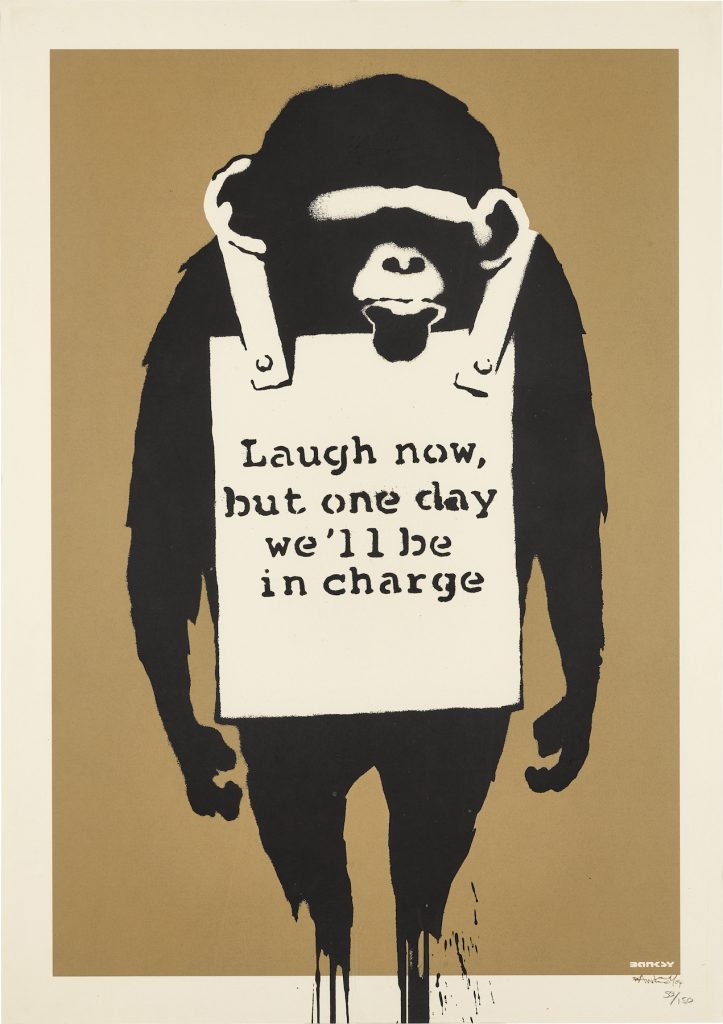Buyer's Guide
7 Questions for Leon Benrimon, Vice President of StartEngine, the Tech Platform That’s Shaking Up the Collecting Game
"StartEngine is the future of art investing without the hassle," says Benrimon.

"StartEngine is the future of art investing without the hassle," says Benrimon.

Artnet Gallery Network

Fans of the television show Shark Tank may recall the appearance of StartEngine, a crowdfunding platform that helps startups and investors connect, a few years back (it earned a stamp of approval from host Kevin O’Leary).
StartEngine is aiming to attract art lovers, too. The Los Angeles-based platform, founded in 2015 by Ron Miller and Activision’s Howard Marks, offers clients the option to make fractional investments in blue-chip art.
“By offering crowdfunded fractional ownership in artworks, StartEngine gives both art lovers and novice investors a way to access the benefits of partial ownership in an artwork without those barriers to entry,” said Leon Benrimon, who worked with Heritage Auctions and as an independent dealer before joining StartEngine as vice president.
Recently, we spoke with Benrimon about StartEngine and why the art world should take notice.
How would you explain StartEngine in just three or four sentences?
StartEngine is one of the leading equity crowdfunding platforms in the U.S., where everyday people can find and invest in early-growth companies and startups, as well as a variety of alternative assets. StartEngine has helped more than 500 companies raise $500 million from a community of over 750,000 prospective investors. In 2021, StartEngine expanded its services to offer collectibles like fine art, comic books, sports cards, and fine wine.
What should art lovers know about StartEngine? How can it be a tool for collectors?
StartEngine gives art lovers and collectors a unique opportunity to invest in high-recognition artworks without having to deal with the barriers that can typically make art investment problematic. Investors can buy shares in the entity that owns the artwork for as little as $10 (on some artworks). StartEngine allows art collectors the ability to invest in art without having to worry about the due diligence process, assessment of fair market value, shipping, authenticity, and provenance on the acquisition side, and insurance, storage, and yearly appraisal on the long term management side.
Finally, StartEngine may offer collectors a way to sell their investments in artworks by offering a secondary market trading platform for shares for investors who may want to sell their shares before the artwork is sold, or for those who may want to wait until the artwork is sold, the handling of the entire sale process including offering artworks at auction, with a dealer, or via private transaction, taking care of potential viewing, shipping, and payment among other logistics. While the plan is to allow these shares to trade on secondary, as we mention on the page, trading on secondary is subject to certain requirements, and even if the shares are traded, it is important to understand that there is no guarantee a market will develop, or if one does develop, that the shares will trade above the price you paid for them. All in all, StartEngine is the future of art investing without the hassle.

Banksy, Laugh Now. Courtesy of StartEngine.
You have a background in the arts. Can you tell us about that and how you came to StartEngine?
I believe my move to StartEngine is kismet. As some may know, I was very fortunate to grow up surrounded by art and the art world. My family has been involved in the art world for as long as I can remember. After having closed my primary market art gallery in Chelsea, Benrimon Contemporary, I was faced with a difficult decision: join Heritage Auctions, which had offered me a fantastic position, or go off to launch a startup called ArtShares, which would allow collectors to invest fractionally in artworks, using what were then crowdfunding laws. The fractional ownership model had been presented to me by a friend who was launching a similar platform for music royalties and another who was doing so with luxury yachts.
I chose Heritage Auctions, a company where I enjoyed nearly seven wonderful years. When a family member put me in touch with Howard Marks, the founder of StartEngine, who explained what the platform did and was looking to expand into, it felt like fate had brought me back to the same position I was in seven years earlier. Having enjoyed my time at Heritage immensely, it felt like the right time to revisit the idea that I never got to explore. My meeting with Howard was an instantaneous click, understanding that StartEngine, which already had great success in the world of startups, was destined to change the face of modern investing by offering investors a variety of investment options to complement the traditional offerings of stocks and bonds.
What do you think are the art world’s main barriers to entry?
Unfortunately so many. As an art lover for my entire life, my greatest peeve is that so many find it difficult to start collecting art. I think the greatest barrier is the financial means to buy a blue-chip artwork, which is usually expensive and, as a result, daunting to the average art lover. Even if one could overcome that hurdle, a significant amount of learning is necessary between the primary-market and secondary-market players. Imagine, if you are starting to collect, you need to learn about the players in both marketplaces, understand how to conduct due diligence, appraise fair market value, research shipping, insurance, and storage solutions, not to mention conservation and framing. All that just to acquire a work, and then a similar set of issues when the time comes to sell the work. While I love art, it is clear the art world runs off of an inefficient model that makes entry into the market challenging to the average art lover.
What are the benefits of fractional ownership of an artwork? Is it purely investment?
While it may seem that fractional ownership is purely investment on the surface, I would argue that it serves a much greater purpose. For years, especially while at Heritage, I would encourage collectors to start by buying lower-value prints and photos as an entry into the marketplace. While I still love both those mediums, they do not compare to painting, sculpture, and drawing; and furthermore, for most blue-chip artists they have risen to a value that is no longer entry level. Fractional ownership allows novice collectors the opportunity to have ownership, and all that comes with that, in blue-chip highly recognized works. I believe that much fractional ownership will be the new gateway into art collecting that prints and photos (or one could argue NFTs) have traditionally served. I truly believe that fractional ownership is the collecting of the future.
What safeguards does StartEngine offer collectors in terms of provenance and authenticity?
Great question. StartEngine conducts a thorough authenticity, provenance, literature, and exhibition history due diligence using a network of trusted advisors and experts. StartEngine ensures the authenticity and provenance of each object on the platform prior to offering it to the public.
Who are the ideal collectors you’re hoping to attract?
Everyone! When I first met with StartEngine founder Howard Marks, I explained that fractional ownership is not a new concept in the art world. For as long as I can remember dealers, advisors, and even some collectors, have bought works for the obvious reasons. Traditionally, art has not been as liquid as other investments, so syndication was a necessity for dealers looking to grow their inventory, so my immediate thought was that dealers would love this idea. However, it has become clear that fractional ownership appeals to the entire art world, dealers, gallerists, advisors, collectors, and investors alike.